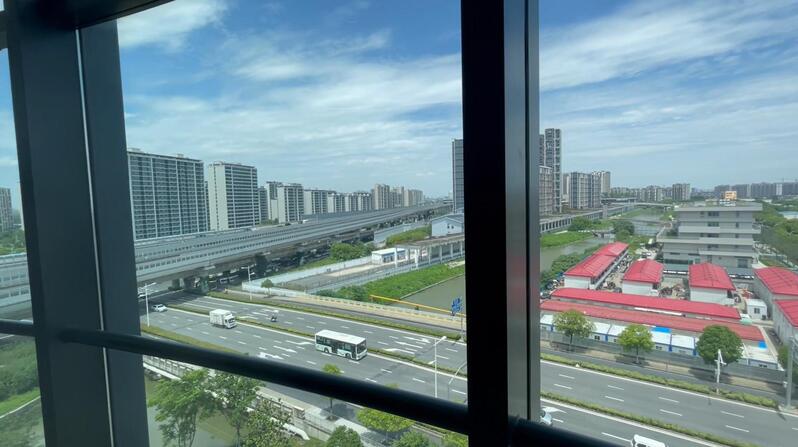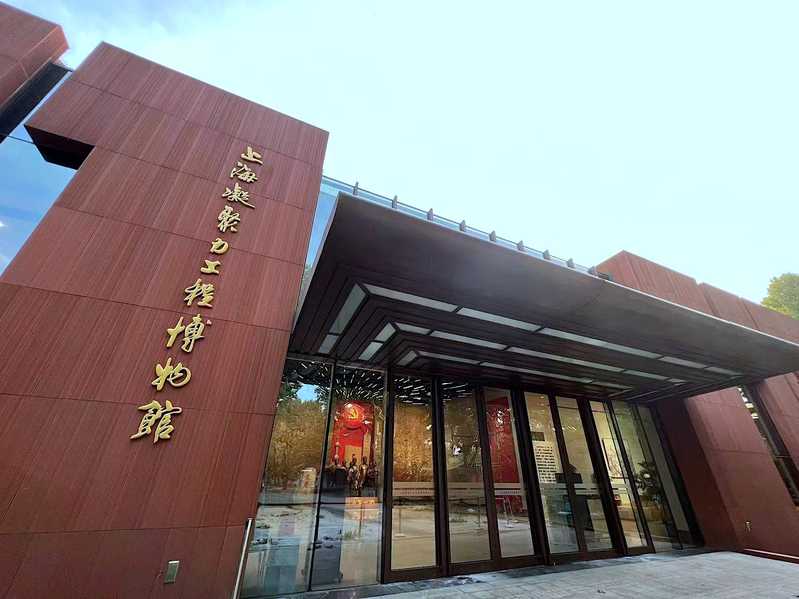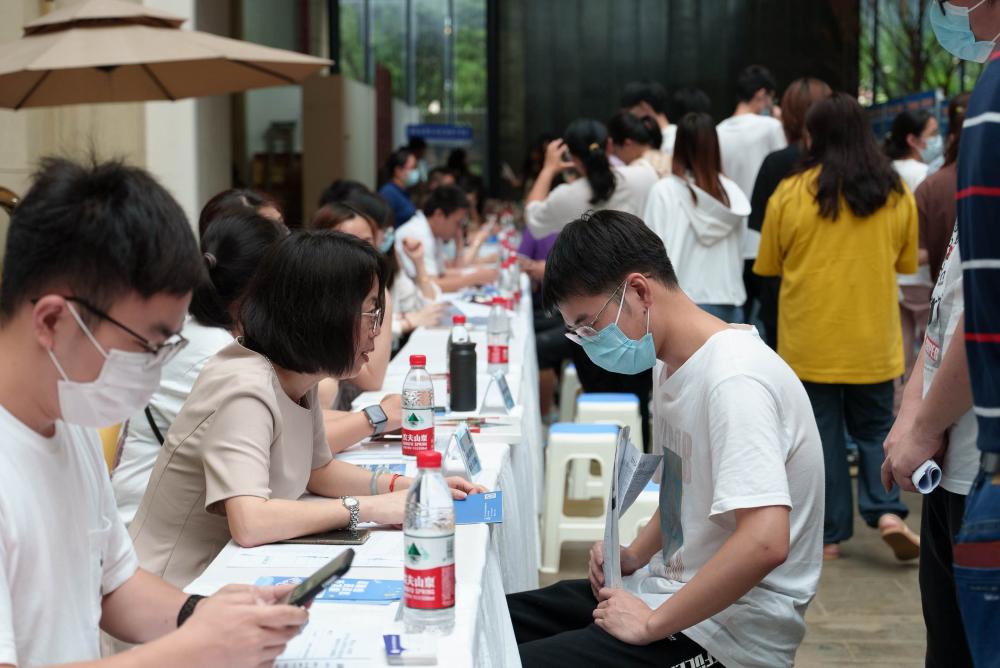The former site of a mysterious Shikumen small building on Jiangning Road in Shanghai, which used to store documents and archives that were even more precious than gold, is now open to the public
On the southwest side of the central axis in Jing'an, Shanghai, a solemn and elegant landmark building of Shikumen stands tall, complementing the adjacent commercial landmark Jing'an MOHO, demonstrating the perfect integration of red culture and modern business tourism. This is the Memorial Hall of the Former Site of the Secretariat of the Communist Party of China. For the first time, this memorial hall shows the struggle process of the Secretariat of the CPC Central Committee in Shanghai in an all-round, whole process and panoramic way. It reproduces the heroic deeds of the secretaries of the Party who adhere to the truth, adhere to the ideals, are not afraid of sacrifice, and fight bravely. It has become a spiritual palace to show the CPC people who practice their original intention, shoulder their mission, are loyal to the Party, and live up to the people. On June 27th, this memorial hall will hold its opening ceremony and officially open to the public on July 1st.
Occurred: Mysterious "Xiaokai" Posts in Newspapers for Renting
In July 1926, the Secretariat of the Communist Party of China Central Committee was established in Shanghai. As the executor of the daily work of the central organs, the aggregator of confidential work within the party, and the hub for communication between superiors and subordinates, it can be said to be the predecessor of the General Office of the Communist Party of China Central Committee. The Secretariat of the Communist Party of China Central Committee, in accordance with the requirements of the Party Central Committee for the "Five Everything" of secretarial work, faithfully fulfilled various responsibilities such as document processing, conference organization, document management, confidentiality work, transportation work, administrative finance, and intra party communication, and played a very important role during the stay of the Communist Party of China Central Committee in Shanghai.
Before the establishment of the Document Storage Department of the Central Secretariat, various documents of the Party Central Committee were mainly carried and stored by individuals, which was very unsafe. With the significant increase in the number of central documents submitted by various ministries and regions on a daily basis, in early 1931, at the suggestion of Zhou Enlai, Zhang Ji'en, a staff member of the Secretariat's Document Department at the time, used his father's name and "Xiao Kai" identity as a cover to rent a two-story old style Shikumen residence in Wenyu Village, Gordon Road, under the pseudonym "Huang Jici". The Central Secretariat thus established a reading office here. A large number of confidential central documents and archives, such as records of various meetings of the Central Political Bureau and Central Committee, confidential business documents of various central ministries and commissions, reports on the situation of various Red Army units, manuscripts of central leadership, and party publications, are also stored here. These document archives can be said to be "more precious than gold".
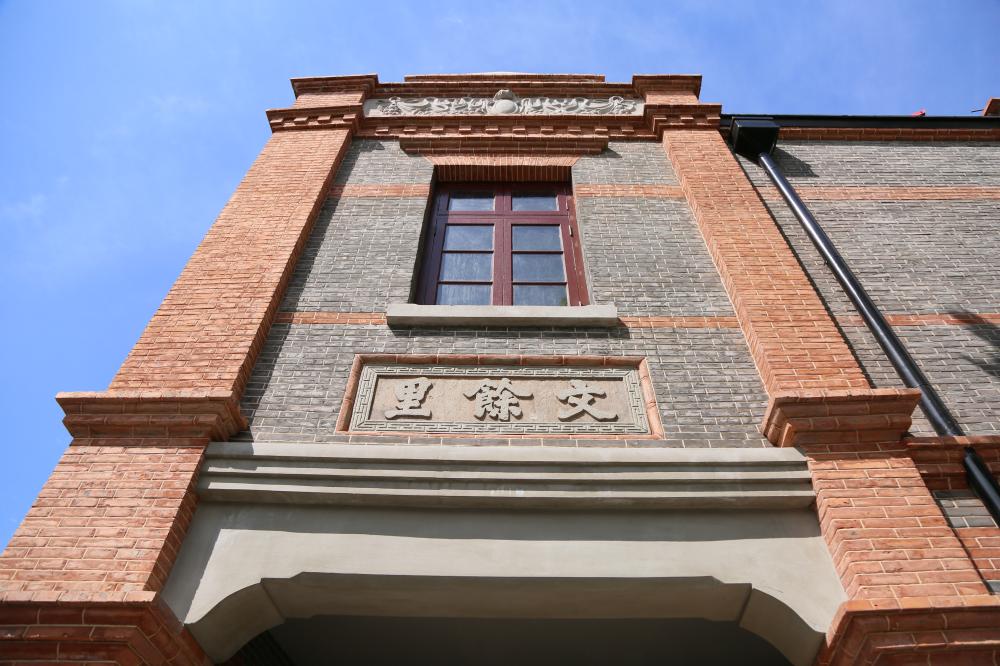
Afterwards, this place took on the responsibility of searching, receiving, and storing important documents and materials, as well as some confidential work of the Secretariat, and also became a secret meeting place for the Central Political Bureau. Leaders such as Zhou Enlai, Deng Xiaoping, Qu Qiubai, Zhang Wentian, and Xiang Ying have held important meetings and arranged work here multiple times.
The "Document Disposal Measures" currently housed in the Central Archives was drafted by Qu Qiubai in 1931 when Zhou Enlai found that there were too many documents piled up while reading them here. The Methods stipulate the principles and methods for classifying, sorting, cataloguing, preserving and destroying archives, and the requirements for the collection and safekeeping of data, which provide guidance for the follow-up work of the Secretariat and fully reflect the far-reaching vision of the CPC to attach importance to the protection of archives under extreme white terror, and strengthen the confidence of the victory of the Chinese revolution.
To ensure safety and facilitate work, Zhang Jien and his wife Zhang Yuexia, who are also staff members, live downstairs to ensure the safety of the reading office at all times. Even with thorough preparation and careful planning, the party organization was still in great danger in Shanghai at that time. On the early morning of June 23, 1931, there was a rapid knocking on the door of this two-story building on Jiangning Road. Zhang Jien, who lived here, knew that the situation was not good and quickly took down the rice basket next to the stove door, issuing an alarm. As soon as the door opened, a group of Chinese and Western patrols swarmed in, and Zhang Ji'en and his wife were arrested on the spot. In Longhua Prison, the couple did not reveal their identities and protected their comrades and important files. Zhang Jien was later sentenced, and this small building gradually faded out of people's sight.
Protection: The original intention remains unchanged for thirteen years

After years of arduous research and research by experts and scholars, as well as previous surveys and reviews of revolutionary sites in cities and districts, in 2010, the Party History Research Office of the Municipal Party Committee submitted a report on the important sites of the Central Committee of the Communist Party of China in Shanghai, including the former site of the Secretariat of the Communist Party of China. The city leaders require in-depth investigation and research on the current situation of various sites in the city, and effectively implement corresponding protection and commemorative measures. In August of that year, Jing'an District announced the old site as a district level registered immovable cultural relic.
In the following thirteen years, the previous district committees and governments of Jing'an District attached great importance to this work, listened to special reports multiple times, and held coordination meetings. In 2013, the protection of the old site was officially launched; In 2017, the old site was announced as a district level cultural relic protection unit, and in 2018, emergency reinforcement projects were carried out on the old site.
In June 2020, the protection and repair project for the former site of the Secretariat officially began. This is a two-story Shikumen building facing north and south, with a brick and wood structure. It has a red and green plain brick exterior wall, a red brick decorative lintel, and a Baroque style Guanyin Dou style mountain wall. The decoration on the east facade along the street is more exquisite, with Western architectural elements in the details of the exterior walls, and finely carved wooden railings with Chinese charm on the overhanging balcony. This renovation is based on historical research and follows the protection principle of "restoring the old as before with minimal intervention", restoring the historical original appearance of the building to the greatest extent possible and enhancing the value of cultural relics. Renovation mainly includes clean walls, sunroofs, flat tiled roofs, mountain wall carvings, Guanyin pouches, indoor walls, floor mosaics, wooden stairs, etc.
The original mosaic floor pattern inside the old site is detailed and complex, but it is severely missing and damaged. To ensure the repair effect, the repair team dispatched technical personnel to Guangdong, Jiangxi and other provinces for on-site sampling of mosaics, and invited experts in cultural heritage, architecture, and other fields for multiple consultations. Finally, it was confirmed that the small samples made from the mosaic found in Guangdong matched the original mosaic in terms of color, specifications, and other aspects. Through the efforts of all parties, the restoration effect of the mosaic floor on the old site has been ensured. In June 2021, the completion acceptance of the repair project, which took into account every detail, was completed. While the loose and decayed parts were renovated one by one, Shikumen's unique western fashion and Chinese elegance were well preserved, and a new "spiritual home of the CPC people" was revealed in the world.
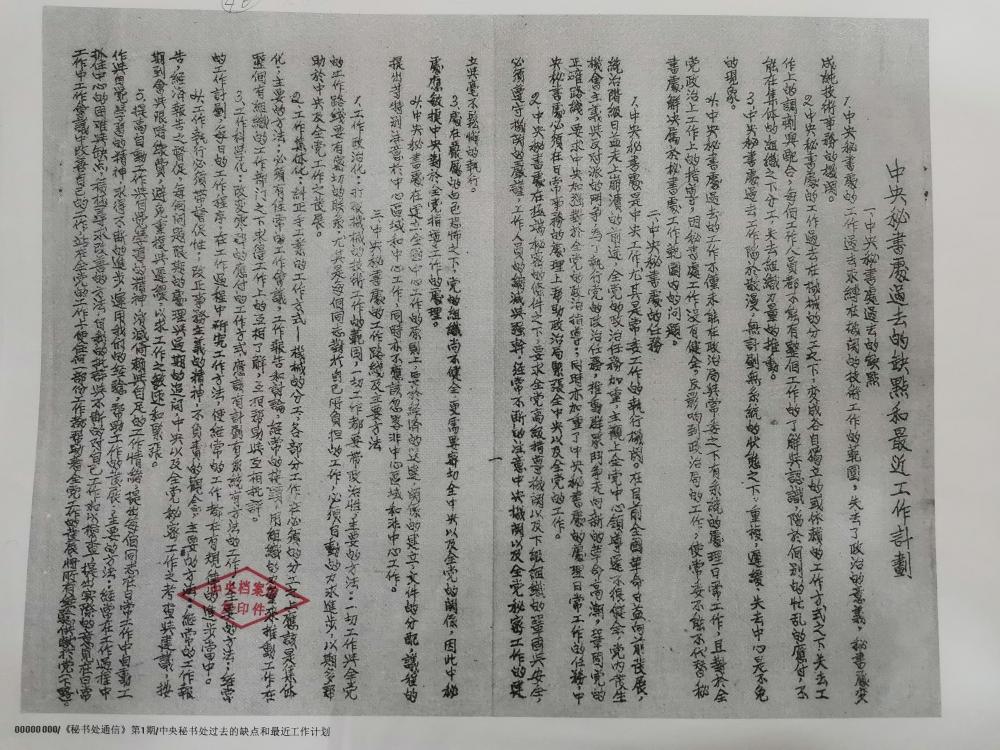
Discovery: "Yes, that's the feeling."
Time flies, fifty years with a flick of a finger. In May 1982, the Shanghai Municipal Commission for the Preservation of Cultural Relics invited the Secretary General of the All China Federation of Industry and Commerce, Huang Jieran, to Shanghai to search for some of the former sites of the Central Committee of the Communist Party of China. Huang Jieran readily agreed and invited Zhang Jien to visit them. On May 28th, at the proposal of Zhang Ji'en, Huang Jieran and he went to the former site of the Central Reading Office to identify and finally determined that No. 10, Lane 673, Jiangning Road was the location of the office at that time.
In August 2020, personnel from the Party History Research Office of Jing'an District Committee visited Xia Shunkui, a staff member who accompanied Huang Jieran and Zhang Ji'en in their search for the former site of the Secretariat of the Communist Party of China Central Committee. They confirmed again the situation of the search and the location of the former site. Xia Shunkui, an elderly person, recalled that when he accompanied Huang and Zhang to the former site of the Secretariat on Jiangning Road, due to the long distance between them, the surrounding buildings at Shikumen were very similar, and the two elderly people could only recall while searching. Until entering the courtyard at No. 10, Lane 673 and climbing to the corner of the second floor staircase, Huang Jieran touched the wooden handrail and said, "Yes, that's the feeling! The handrail and escalator are still the same as before." Huang Jieran and Zhang Jien immediately left a precious group photo.
In 2021, the Party History Research Office of Jing'an District Committee solicited the "Underground Archives of the Communist Party of China Central Committee" jointly shot by the Central Archives and the Shanghai Archives in 1989. In this precious documentary, the surviving guardians of the Central Library at the time have left precious images and interview records in the film, and various storage locations of the Central Library have also left image materials. Especially, Zhang Jien's visit to the former site of the Central Secretariat once again has left precious memories. Once again, it is confirmed that No. 10, Lane 673 is the former location of the Secretariat. This precious documentary film, which has been shrouded in dust for over 30 years, has been meticulously restored and digitally empowered to shine again, playing its unique historical value.
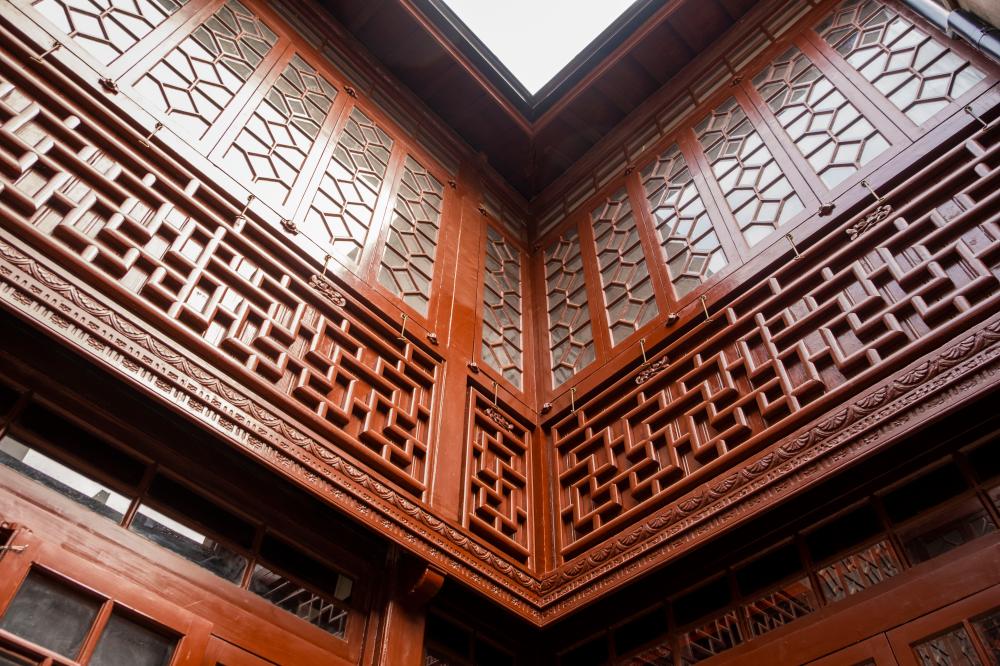
Inheritance: Jade Ru Blooms with a New Appearance
In 2017, the protection of the former site of the Secretariat of the Communist Party of China Central Committee was included as a key task in the excavation and publicity project of the "birthplace of the Communist Party of China" in Shanghai, as well as the restoration and protection of important revolutionary sites such as "one museum and five sites". It was also required to be converted into a memorial venue and opened to the public. Jing'an District has carefully planned and adhered to the principles of "scientific protection, overall planning, orderly development, and reasonable utilization". Led by the Propaganda Department of the Jing'an District Committee of the Communist Party of China, the Party History Research Office of the District Committee is responsible for the construction of the memorial hall for the former site of the Secretariat of the Communist Party of China Central Committee. In June 2021, the General Office of the Communist Party of China and the State Council officially approved the construction of a memorial hall for the former site of the Secretariat of the Communist Party of China in Shanghai.
At the same time, exhibition design and collection of historical materials were also initiated. As a long-term basic exhibition theme exhibition, it not only requires rich historical materials and cultural relics, but also requires exhibition designs that are closely related to the times and attract audiences to stop. Therefore, the Party History Research Office of Jing'an District Committee has successively gone to Beijing, Guangdong, Hubei and other places to collect historical materials, collecting nearly 300 precious historical materials from the Central Archives, the Memorial Hall of the Former Site of the Central Committee of the Communist Party of China in Wuhan, and other places. Conduct on-site inspections and visits to influential revolutionary memorial halls, exhibition halls, museums, etc. across the country, actively draw on mature exhibition methods and techniques from various exhibition halls across the country in recent years, and carefully design and arrange exhibitions. Every stage, every process, every exhibit, every image, every video, and every scene of the exhibition are carefully polished, striving to withstand the judgment of the audience, expert appraisal, and historical verification. The drafting of the exhibition outline has gone through six years and more than ten revisions, with five expert review meetings and three submissions to the Central Party History and Literature Research Institute. We have conscientiously implemented the requirements of expert consultation, historical material approval, and major issue reporting. Based on this, the Secretariat's historical material exhibition has achieved correct guidance, accurate historical facts, and accurate evaluation.
The exhibition of historical materials on the former site of the Secretariat of the Communist Party of China takes "loyalty and dedication" as the "outline" and "soul". Around this spiritual mainline, the exhibition is divided into three major parts: "Blue Clouds and Miles - Origin and Establishment", "Dark Night Starlight - Adherence and Development", and "Quenching into Gold - Loyalty and Dedication". The system demonstrates the loyalty of party secretaries and frontline workers to their missions, their deep achievements, and their special contributions to the cause of the party and the people. Praising their spirit of loyalty, selflessness, fearlessness, and silent dedication to the Party in difficult and dangerous environments. Grasp the relationship between "integrity" and "innovation" in display methods, combine time and space, and expand the display space through special films, touch screens, and other means. Combining presentation and reproduction, enhancing the audience's sense of presence, interaction, and immersion through situational party classes and themed sculptures. Combining technology with art, using naked eye 3D technology to create an immersive party class for the Central Library, enriching the viewing experience of the exhibition, and improving the artistic level and taste.

On the new journey, under the strong leadership of the Municipal Party Committee and Government, Jing'an District will protect red resources, promote red traditions, and inherit red genes with care and effort, helping to polish the golden signboard of Shanghai's "red culture" and make greater contributions to the construction of modern civilization of the Chinese nation in Jing'an.
